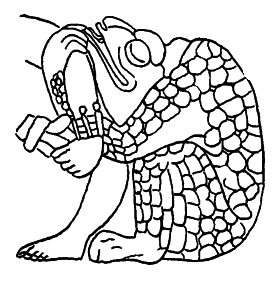モースとユーベル「呪術の一般理論」ノート
Notes on "A General Theory of Magic," by Marcel Mauss and Henri Humbert, 1902
モースとユーベル「呪術の一般理論」ノート
Notes on "A General Theory of Magic," by Marcel Mauss and Henri Humbert, 1902
「呪術の一般理論の素描」は、マルセル・モース(Marcel Mauss, 1872-1950)とアンリ・ユーベル(Henri Humbert)の共著の論文で、に『社会学年報』1902-1903年号で発表された。
概要:"First written by
Marcel Mauss and Henri Humbert in 1902, A General Theory of Magic
gained a wide new readership when republished by Mauss in 1950. As a
study of magic in 'primitive' societies and its survival today in our
thoughts and social actions, it represents what Claude Lévi-Strauss
called, in an introduction to that edition, the astonishing modernity
of the mind of one of the century's greatest thinkers. The book offers
a fascinating snapshot of magic throughout various cultures as well as
deep sociological and religious insights still very much relevant
today. At a period when art, magic and science appear to be crossing
paths once again, A General Theory of Magic presents itself as a
classic for our times." - A General Theory of Magic. (ESQUISSE D'UNE THEORIE GENERALE DE LA MAGIE"
呪術の一般理論の素描
第一章 沿革と資料 47
第二章 呪術の定義 55
第三章 呪術の諸要素 64
1 呪術師 64
1.1. 呪術師の資質 66
1.2.入社式、呪術結社 84
2 行為 89
2.1 儀礼の諸条件 90
2.2 儀礼の性格 97
2.2.1 手の儀礼 97
2.2.2 口の儀礼 101
3. 表象 110
3.1 抽象的な非人格的表象、すなわち呪術の法則 114
3.2 具体的な非人格的表象 128
3.3 人格的表象、すなわち霊鬼崇拝 134
4 概観 142
第四章 呪術の分析と解釈 148
1. 信念 148
2. 呪術現象の分析——儀礼の効験についての理念的解釈の分析 156
3. マナ 168
4. 集合状態と集合力
第五章 結論 209
● Fanuel distributes magial apples to the sick and injured; with his right hand, his wipong the knife on his left thigh.-- Blake Guttのpdf資料より
ファヌエルは、旧約聖書外典「第1エノク書」などに 言及されている天使。「ウリエル(Uriel)」や「ラグエル(Raguel)」、「ラミエル(Ramiel)」などと同一視される。名前は「神の御前」 を意味し、神の御前の天使の中でもとくに重要な4天使の一人とされることもある(『神魔精妖名辞典』 より)/ 葉巻の呪文とは、キリスト教会の圏域外(つまり異端 的文脈)で、使われる「愛の呪縛呪文である」。呪文において男女をとわず自分の愛人・恋人・不倫相手などを、自分の元に引き寄せ、また惚れさせ、無形の愛 のほかに、有形の財産や貨幣を貢がせる呪術である。邪悪な儀礼と考えられているので、日本の丑の刻参りのように、完全秘密の文脈のなかで行われる.
リンク
文献
その他の情報
Copyleft, CC, Mitzub'ixi Quq Chi'j, 1996-2099
San Simon moderno y San Simon artistica....// St. Simon, by Peter
Paul Rubens (c. 1611), from his Twelve Apostles series at the Museo del
Prado, Madrid
